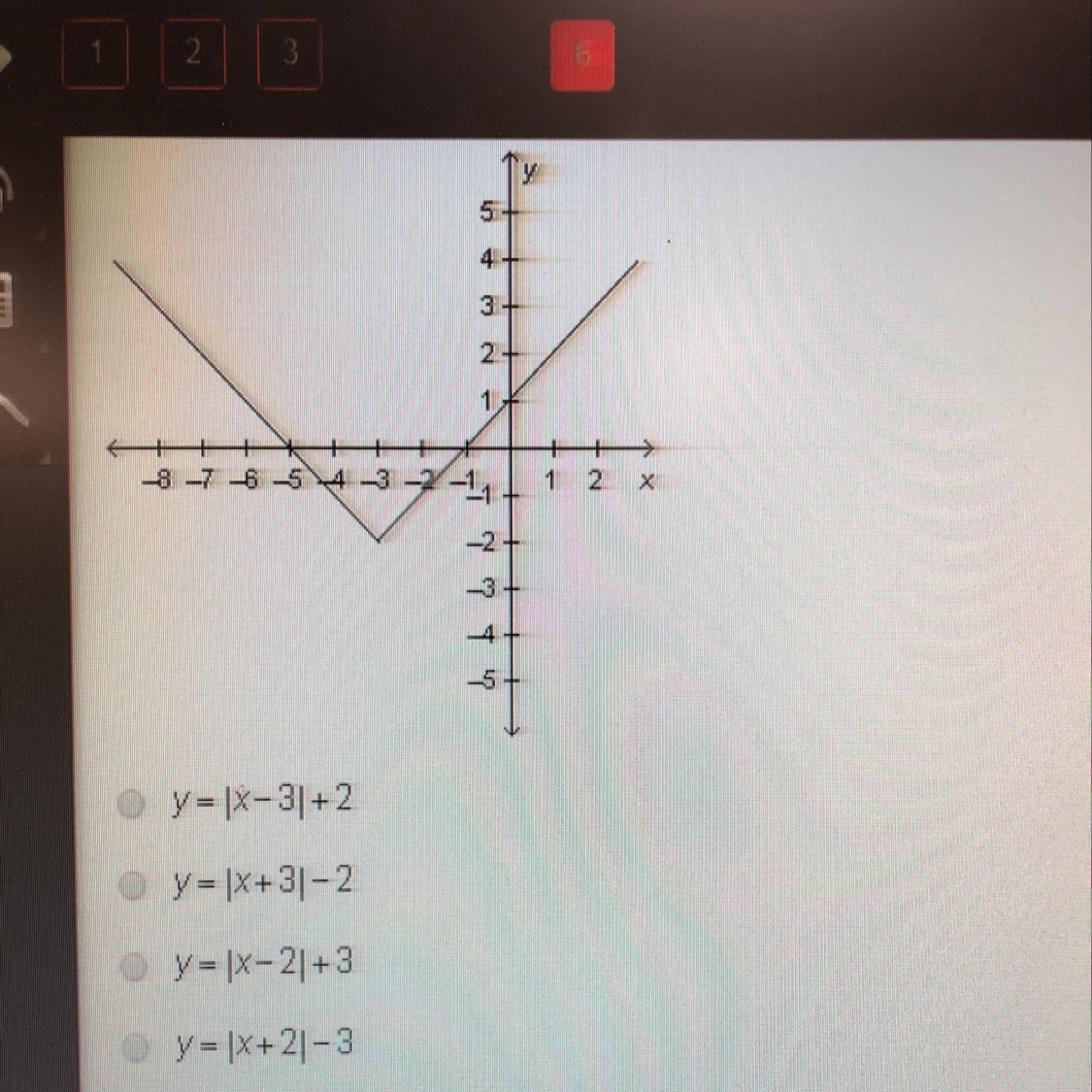The graph of y=|x| is transformed as shown in the graph below. Which equation represents the transformed function?


we have that
the original function [tex]y=\left|x\right|[/tex] has the vertex at point [tex](0,0)[/tex]
The transformed function has the vertex at point [tex](-3,-2)[/tex]
so
the rule of the translation is equal to
[tex](x,y)------> (x-3,y-2)[/tex]
That means
The translation is [tex]3[/tex] units to the left and [tex]2[/tex] units down
therefore
the answer is
the transformed function is [tex]y=\left|x+3\right|-2[/tex]